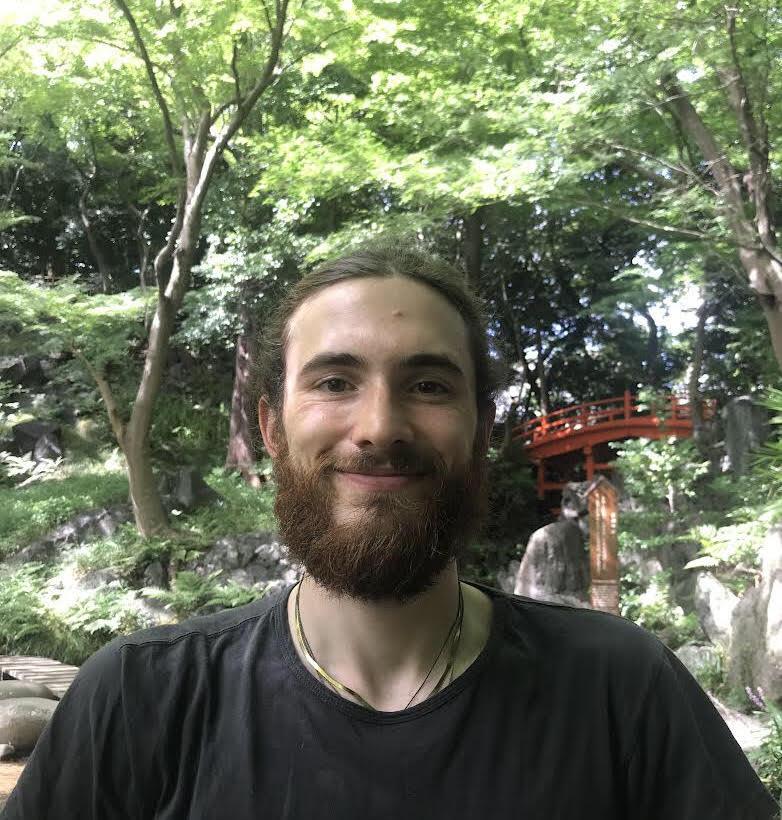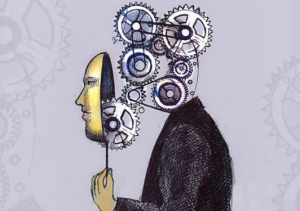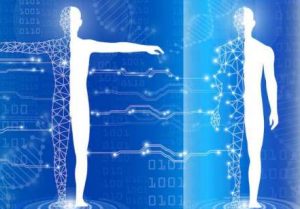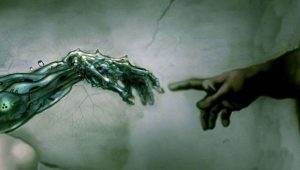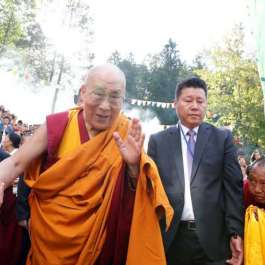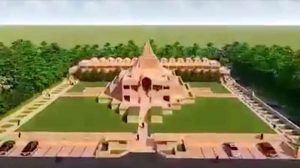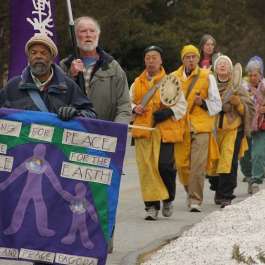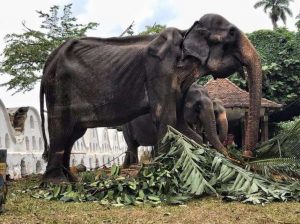Last month, we left Vienna Rae at the cutting edge of an emerging movement toward regenerative economics and culture grounded in the principles of reciprocity and Earth-bound contemplative awareness.1 Having merely skimmed through the meaningful connections and instructive side quests that conditioned her present focus, a closer look at these encounters is in order.
After Vienna’s experience in electoral-reform activism and the International Network of Engaged Buddhists’ 2013 conference in Kuala Lumpur, her understanding of structural violence and awareness of the need for systemic change became increasingly intertwined. Recognizing the upsides of technology for effective resource management (big data), large-scale group coordination (decentralized governance), and personal development (biofeedback), she became curious as to why more Buddhist teachers in the East were not directly considering these tools as viable means of addressing personal and structural suffering.

Entering the wild wired West
Pursuing these questions, Vienna discovered Buddhist Geeks, a podcast and online community based in the United States that explores the intersection of technology and contemporary Buddhism through a practical, non-dogmatic lens. Inspired by topics related to the “network era” that co-founder Vince Fakhoury Horn continued to bring up on the show, Vienna arrived at the 2014 Buddhist Geeks conference in Boulder, Colorado, keen to connect. Among the conference attendees she met was an energetic engineer named Mikey Siegel, who had himself just returned from a similar pursuit of clarity and perspective, only in the opposite direction: India.
Previously, Seigel had run the gamut working on robotics at NASA in California, before receiving a masters from the MIT Media Lab. Settling in San Francisco at a successful startup had seemed to be the cherry on top, but something was still missing. Ultimately, the “disease of dis-ease”—what Shakyamuni Buddha referred to as the First Noble Truth of duhkha—prevailed and set Mikey on course for the exotic subcontinent in search of deeper meaning. A slew of encounters and insights in India and later in Hong Kong inspired Siegel to find a way of blending technology with spirituality in order to make transcendent experiences more universally accessible.

Enlightenment engineering
Pleased to hear the story of a fellow traveler determined to build new bridges between head, heart, and tech, Vienna moved to the Bay Area and began helping Siegel to organize meet ups around what he called Consciousness Hacking. By combining science, technology, and spirituality, Consciousness Hacking seeded a DIY community of “enlightenment engineers”—a term referring to the movement in the book Stealing Fire (Kotler 2018)—focused on building new tools intended to facilitate deep explorations of the human experience.
Siegel’s approach drew inspiration from the Quantified Self movement, which had already established a rich community of numerophiles deploying technology to track, measure, and analyze data from various aspects of their daily lives, such as health, fitness, and productivity. Utilizing wearable devices, smartphones apps, and all manner of ornate graphs, these individuals aimed achieve a degree of reflexive awareness from which their behavior patterns could be interpreted and optimized. While effective, Siegel knew that such an intellectual, data-driven view lacked the qualitative texture of transformation that spiritual traditions had honed over millennia. Aware of local California traditions surrounding the transformation of consciousness, Siegel offered a pithy distinction in 2014:
If Quantified Self is like listening to a Timothy Leary lecture, Consciousness Hacking is like taking LSD.2
This do-it-yourself flavor and experiential approach proved highly appealing, as Vienna found when she attended her first Science and Non-Duality conference in Silicon Valley. There, Siegel was exhibiting a project he had developed called Heart Sync, a technology-facilitated meditative experience that visualizes heart-rate variability data from multiple participants as a mandala-like pulsating graphic. The program guides participants into synchronized heart rhythms via simple breathing techniques and ambient sound, resulting in an experience of intimacy, relaxation, and group flow. Seeing people engage with this “tech for awakening” for the first time was a significant experience for Vienna, who left the conference feeling optimistic for the future of contemplative practice in Silicon Valley.

Me or we?
After enthusiastically organizing hackathon events for the Transformative Technology Lab at the Institute of Transpersonal Psychology (now Sofia University), momentum behind the movement picked up quickly both stateside and internationally. At Sofia University, Vienna worked with Dr. Jeffery Martin in helping to design the Finder’s Course, a three-month intensive meditation protocol designed to help spiritual seekers discover what practices worked for them through data- and evidence-driven analysis. Siegel had met Dr. Martin while in Hong Kong and had, in turn, introduced Vienna to his work blending science with awakening, or what he calls “persistent non-dual awareness.” However, despite surging interest in the field of technology-mediated inner work, Vienna began to perceive a troubling fork in the basic motivations fueling her involvement in the movement.
Her experiences in the East had connected Vienna to an engaged spirituality characterized by “boots on the ground” activists working together at the grassroots level for systemic change. In the West, she felt that, while people in the community that she had joined were engaged on the same wavelength, their practices were focused almost entirely on self-development without much attention directed toward structural issues.
Consciousness Hacking is a hands-on approach to making new tools that directly alters our conscious experience. It’s an inside-out perspective: technology can serve us by changing our relationship to the world, rather than the world itself.3
In this early definition of Consciousness Hacking drawn from one of Siegel’s presentations, one can see the individualistic values that started to strike Vienna as both isolating and slightly missing the point. She felt technology united with expanded awareness might need to transform the world if we hope to adequately address the mounting list of crises facing life on Earth.
This recognition helped Vienna to realign the focus of her work toward economic innovations, which she hoped would be a more communal effort toward systemic transformation. After moving to the Economic Space Agency, a collective formed to innovate post-capitalist systems using blockchain and distributed ledger technology, Vienna did experience more camaraderie, but soon woke up to the reality of life in the Valley. Surrounded by the brightest engineers in the world all vying to leave their mark, it didn’t seem to matter whether you were building a less violent financial system or the next unicorn—Alpha was king.

Monastic Academy
Amid this disillusioned period, Vienna returned to her Buddhist practice and met Soryu Forall, an American who had trained in numerous Buddhist traditions, including Rinzai Zen. Forall is the founding teacher of the Monastic Academy, a modern contemplative training center, non-profit, and intentional community based in Vermont. Vienna was curious to see whether this center, often referred to as MAPLE—the Monastic Academy for the Preservation of Life on Earth, would provide the blend of community and shared purpose that she had missed on the West Coast.
With highly regimented weekly routines, the fusion of personalities, interests, and quirks inside of the Monastic Academy delivered a kaleidoscopic atmosphere that suited Vienna well for a time. Many long-term residents considered themselves “post-rationalists,” having gravitated to the center seeking a grounded integration of awakening with social and environmental responsibility. Discussions on the multidisciplinary fields of existential risk, effective altruism, and systems theory introduced Vienna to a vast array of ideas and salient concerns inside the rigorous container of community life.
A strong sense of purpose and togetherness permeated her time at the Monastic Academy, especially regarding the way residents approached and interacted with technology. “Buddhism in the Age of Artificial Intelligence,” the subject of a free online course produced by MAPLE, is one example of how the community has sought a synthesis of the Dharma with modernity as a response to the confusion of our times.

Weaving it all together
Determined to find a practical integration of her experiences on both coasts of the US, Vienna created an experimental NFT4 project while living at the Monastic Academy designed to convey the quantitative and qualitative beauty of contemplative life. In collaboration with Honshin, a graphic artist and fellow MAPLE resident at the time, Vienna utilized two types of bio-feedback devices to record data during a creative drawing session with an iPad.
Wearing a Muse headband that tracks shifts in brainwave frequency, Honshin illustrated a lone monk begging for alms in a dark, cyber-punk vision of Tokyo. Data from the headband was processed through software to create a live ambient soundtrack that responded to shifts in the artist’s neurological state by introducing chirping birds and running water. A heart-rate variability device was also attached to Honshin’s ear measuring the degree of synchronization or coherence between their heart and brain. As the artist’s concentration deepened, the system would generates gentle “pings” like strikes on a tuning fork indicating that coherence was increasing.

The result was a multi-modal attempt to exhibit the inner experience of a creative-contemplative act. By recording live bio-feedback data and presenting it next to the art itself, the audience gains the ability to peer into the active physiology of creation. With real-time data being fed to the artist, Vienna hoped to model a “regenerative loop” wherein synchronized physiology could directly support the creative process and, in turn, lead to newfound appreciation of the art produced.
The title of the work, Begging for Life, is an allusion to the monastic practice of begging for alms, a daily activity that not only connects monks to the larger society (especially in Theravada societies) but also illustrates the interdependent nature of life. Vienna felt that drawing awareness to this basic reciprocal relationship between “self” and “other” was foundational to cultivating a more comprehensive view of economic and environmental activity. In the next part of this series, we will explore how she continued to research these ideas at Stanford University from the perspective of Buddhist economics.
From the inner-mountain west to sun-baked California and leafy green Vermont, Vienna Rae’s spiraling adventures across the US on the techno-Buddhist path continues to evolve. While self-striving and dubious applications of mindfulness to corporate strategy abound, pockets of people do see a connection between tech and social transformation that might help cool our collective agitation, one pinging insight at a time.

1 Vienna in the Silicon Pure Land, Part 1: Feeling into the Dharma of Emerging Technology (BDG)
2 28:48, SF Meet Up, 2 August 2014
3 20:06, SF Meet Up, 2 August 2014
4 *Non-Fungible Token: an object that is entirely unique (i.e. handmade or 1/1) and cannot be exchanged for another on a one-to-one basis (such as can be done with a dollar bill). In the context of digital art, NFTs carry a unique hash number that identifies the ownership and authenticity of a specific item using encryption via blockchain technology.
References
Kotler, Steven and Jamie Wheal. 2018. Stealing Fire: How Silicon Valley, the Navy SEALs, and Maverick Scientists Are Revolutionizing the Way We Live and Work. New York City: HarperCollins.
See more
ViennaO (Linktree)
Buddhist Geeks
Buddhist Geeks (Linktree)
Consciousness Hacking
Science and Non-Duality
Heart Sync (YouTube)
Transformative Technology Lab
Dr. Jeffery Martin
Economic Space Agency
Monastic Academy
Buddhism in the Age of Artificial Intelligence (Monastic Academy)
Digital Bodhisattva (Facebook)
Digital Bodhisattva (Clubhouse)
Digital Bodhisattva Initiative (Linktree)
International Network of Engaged Buddhists (INEB)
INEB (Twitter)
Related features from BDG
Vienna in the Silicon Pure Land, Part 1: Feeling into the Dharma of Emerging Technology
Vienna in the Silicon Pure Land, Part 3: Reimagining Buddhist Economics
Vienna in the Silicon Pure Land, Part 4: Making Dharmic Finance Cool
Related videos from BDG
BDG Special Issue
Digital Dharma – Buddhism in a Changing World


